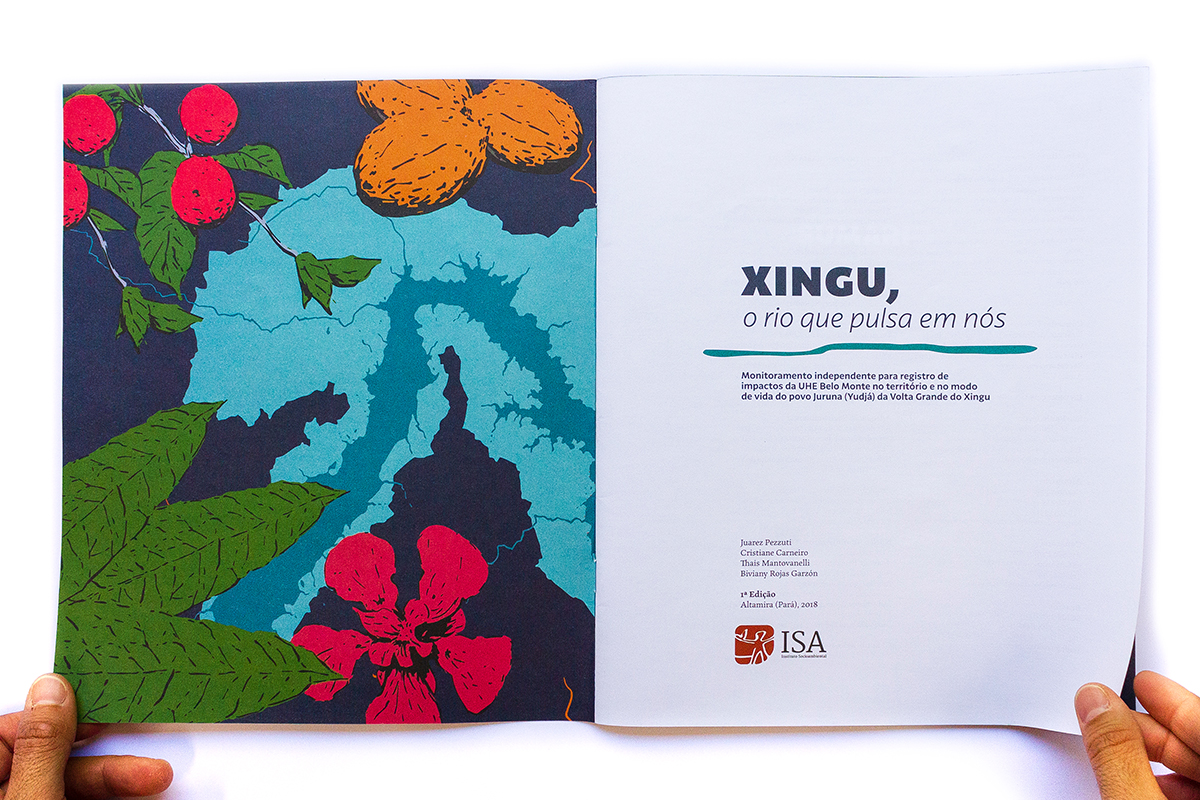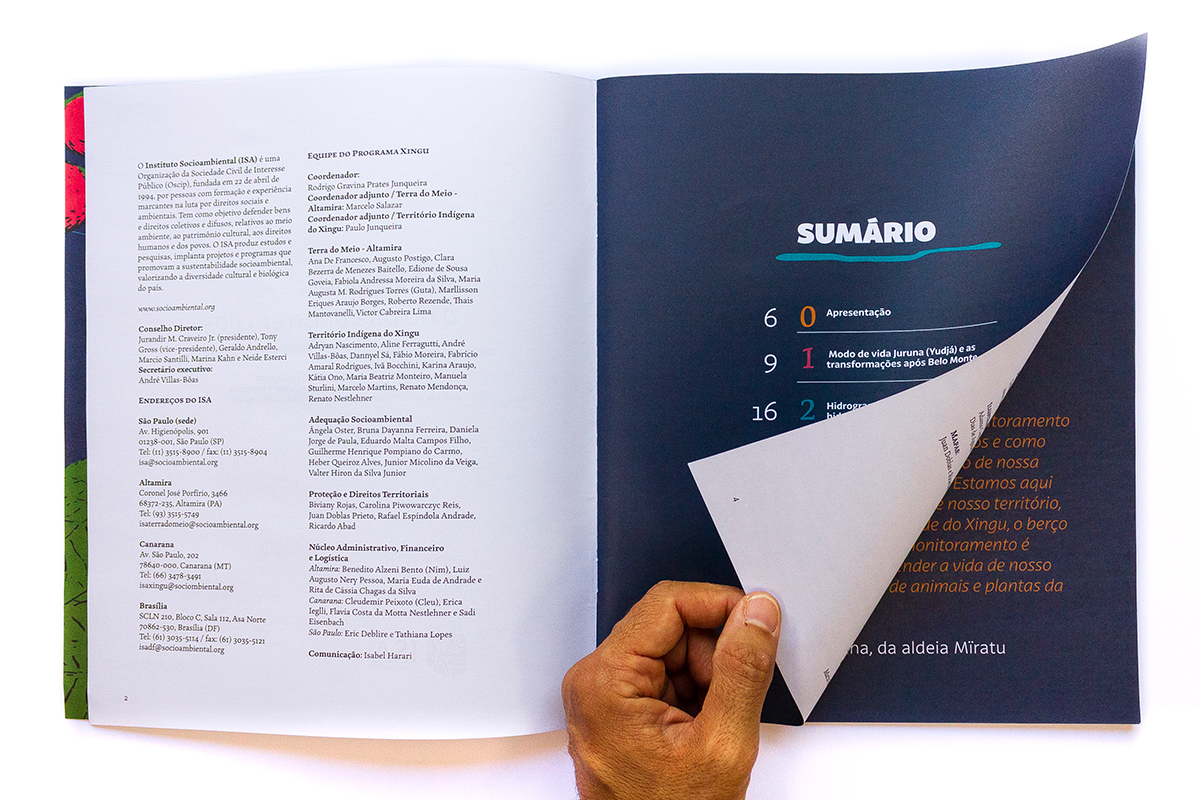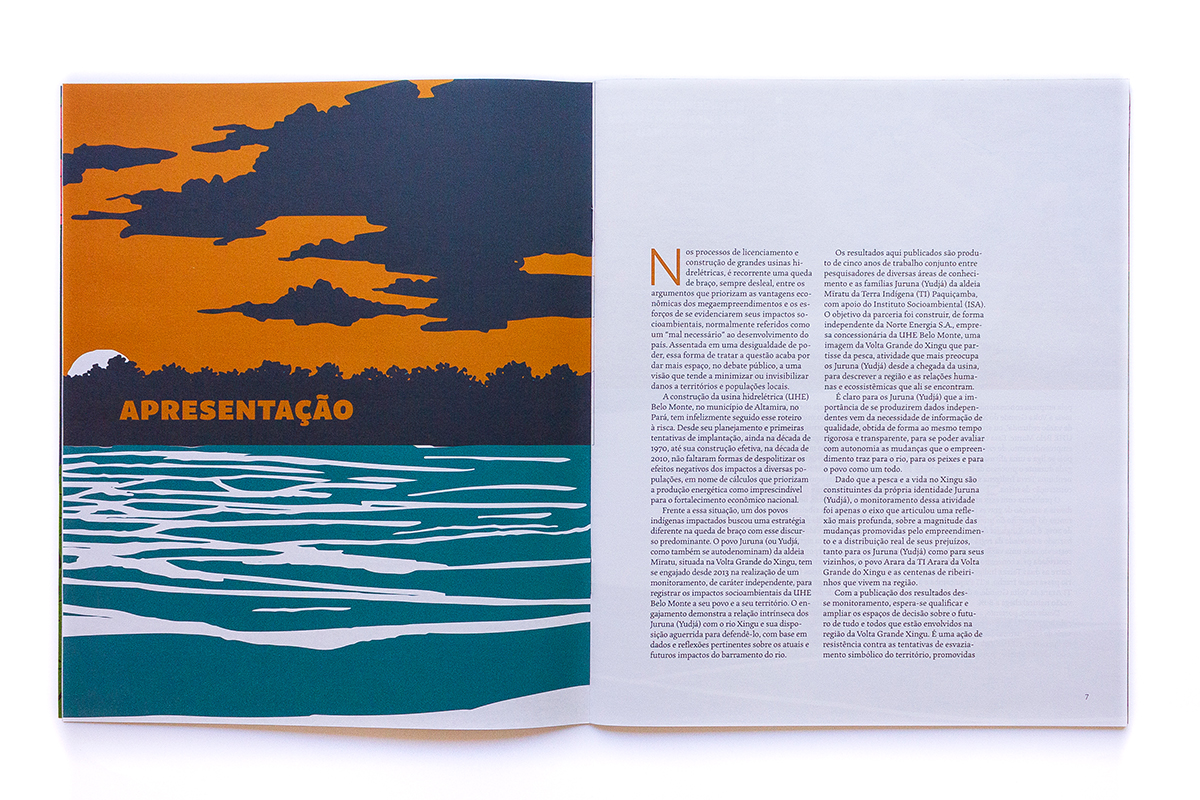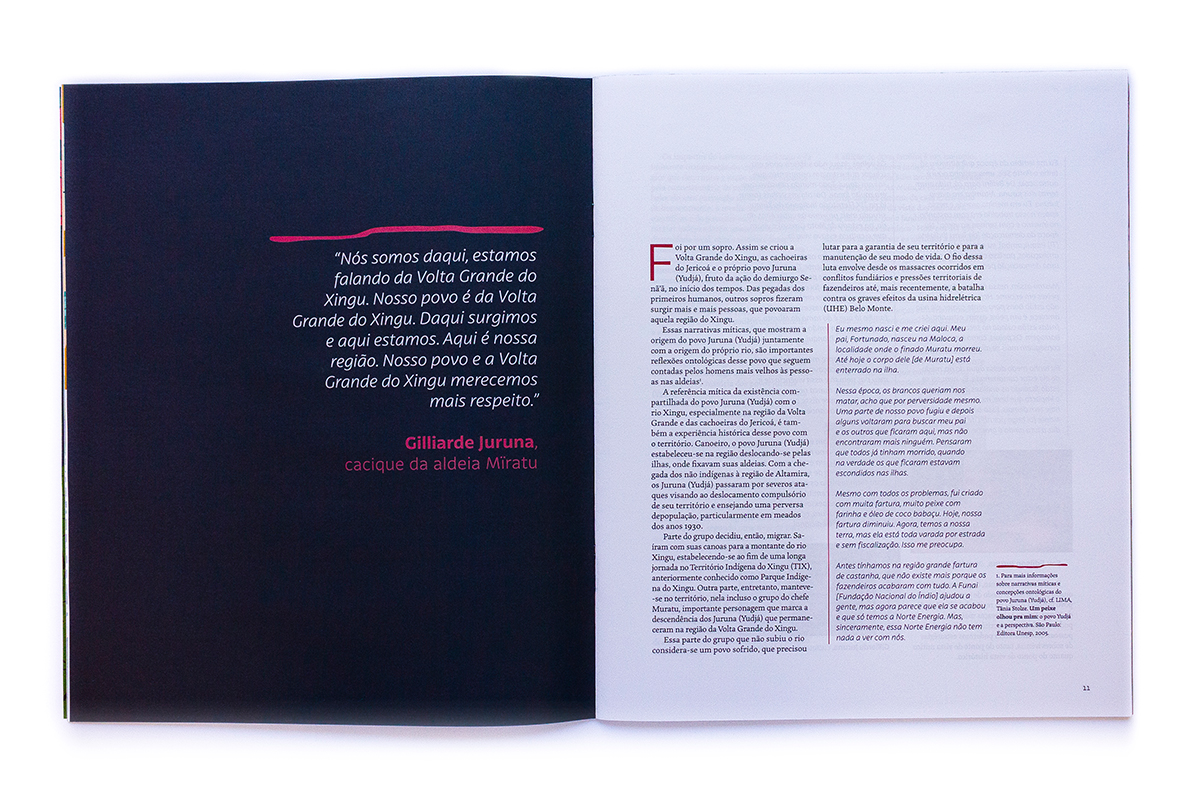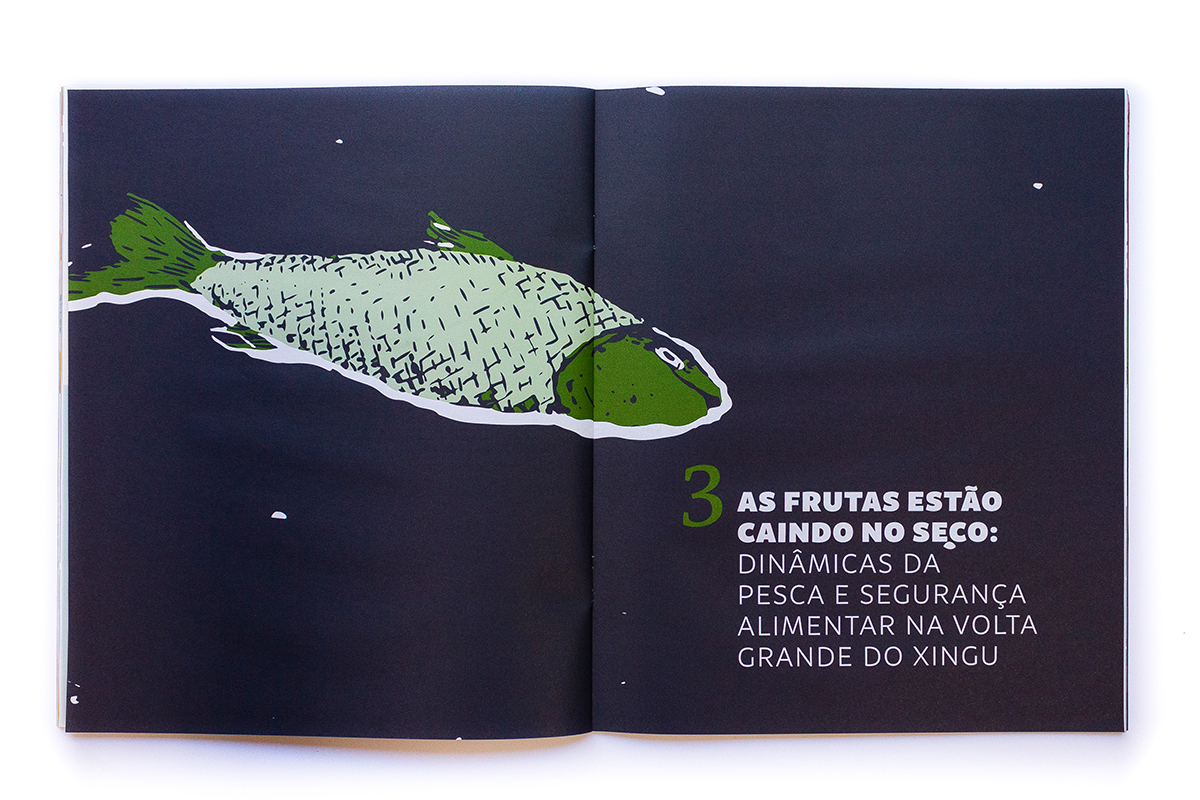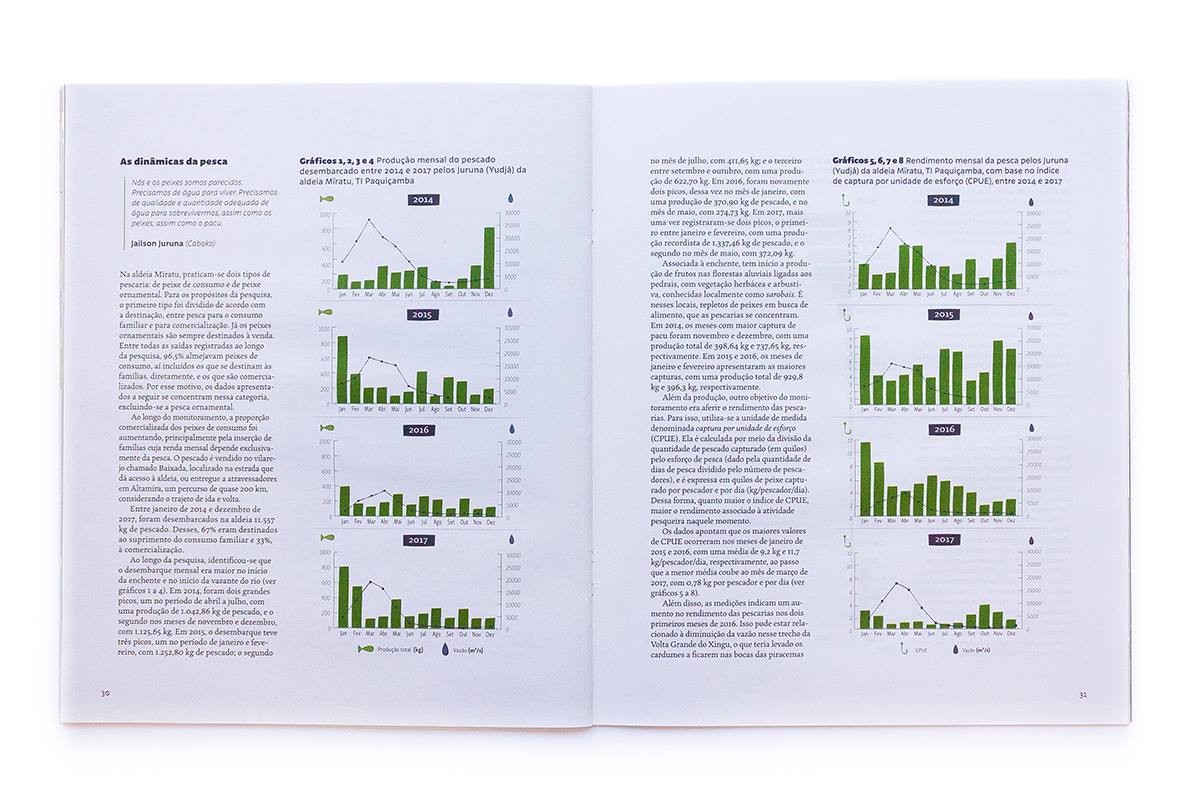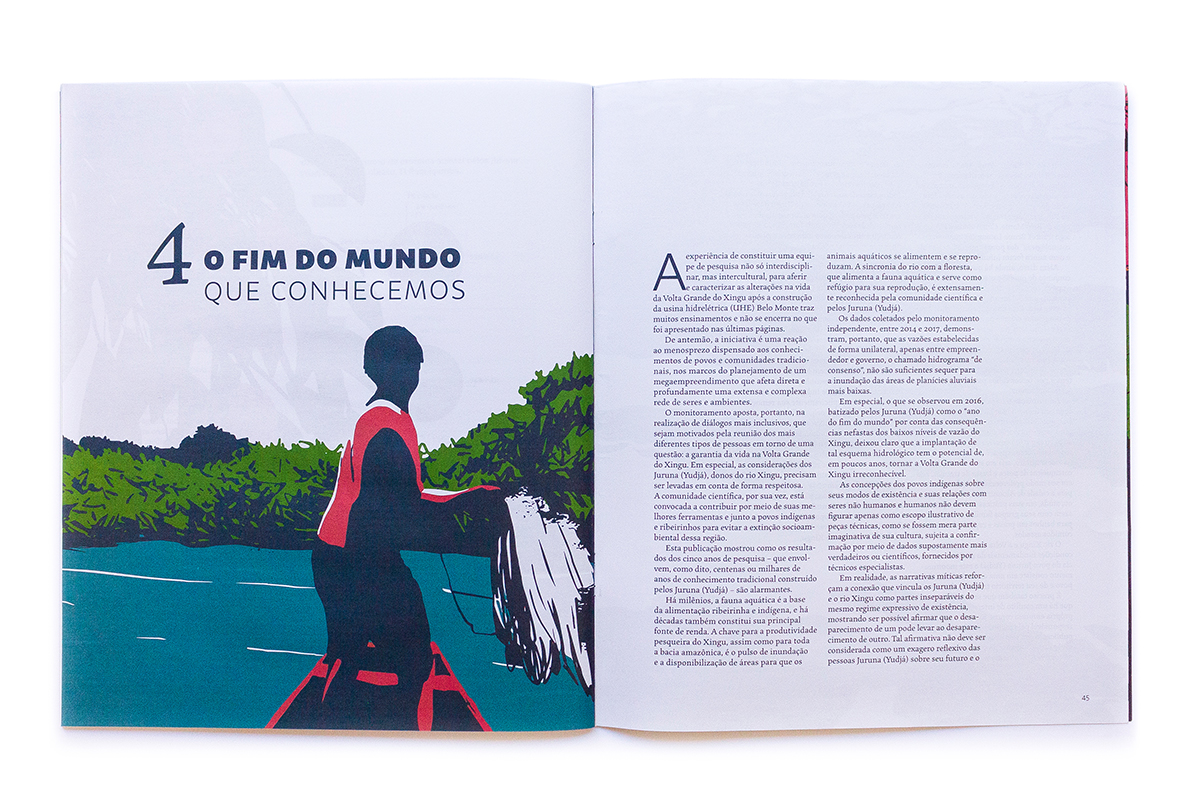Xingu, the river that flows through us
Editorial Project reporting on the impacts of the Belo Monte Dam on the Xingu
Context
The Socio-environmental Institute is an organization which has the difficult task of proposing solutions related to environmental and social issues, with the objective of guaranteeing rights to the traditional peoples of Brazil. The publication, Xingu, the river which flows through us, presents the hydrography of the Xingu River both before and after the installation of the Belo Monte Hydroelectric Dam, and illustrates the changes which have affected the entire area. It looks at the population living there, as well as the flora and fauna. The article also presents the Juruna people, who depend directly on the river and its tributaries in order to exist. The information exposed in the publication is essential and reinforces the necessity for changes in the politics of that region.
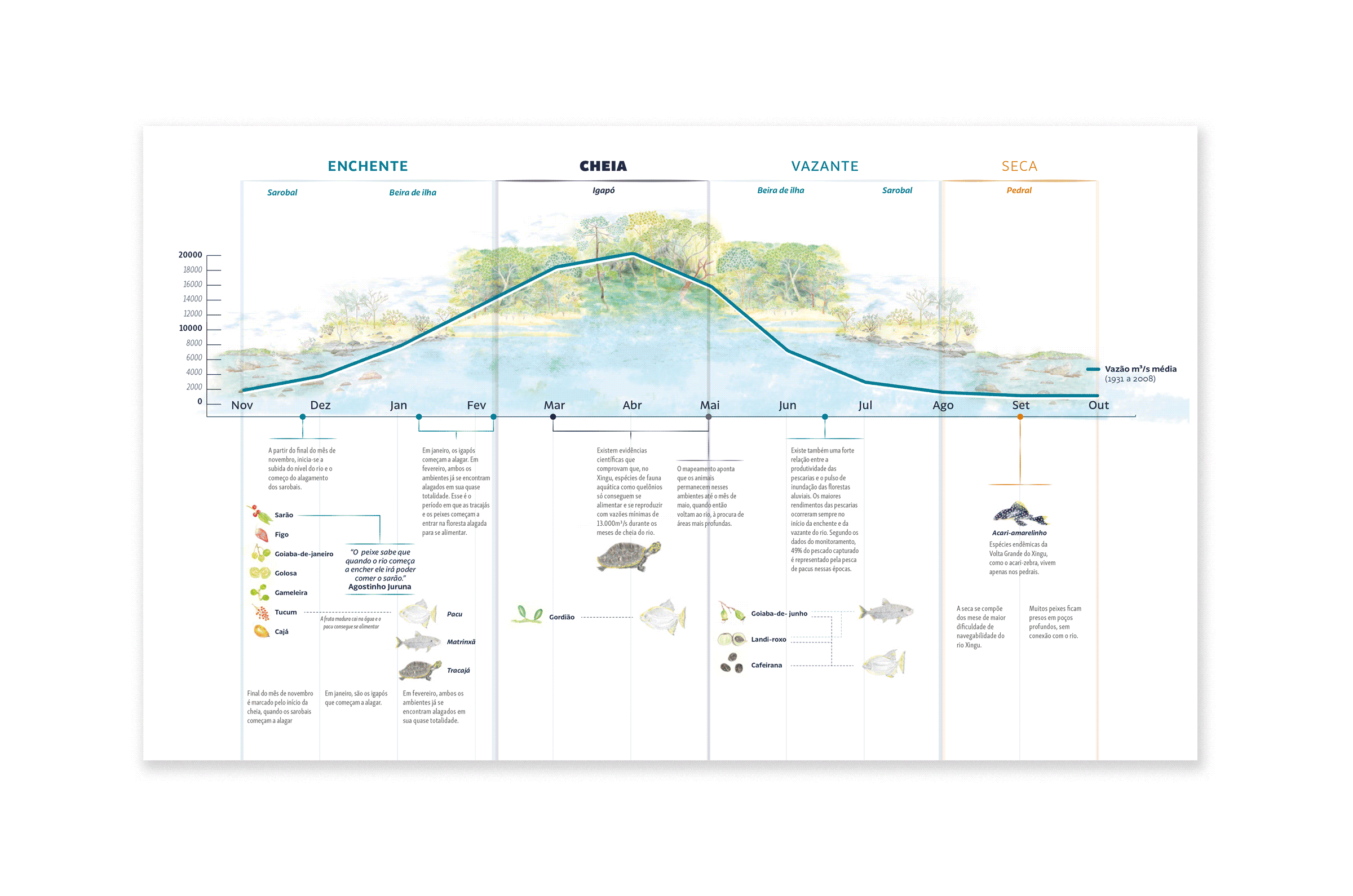
Challenge
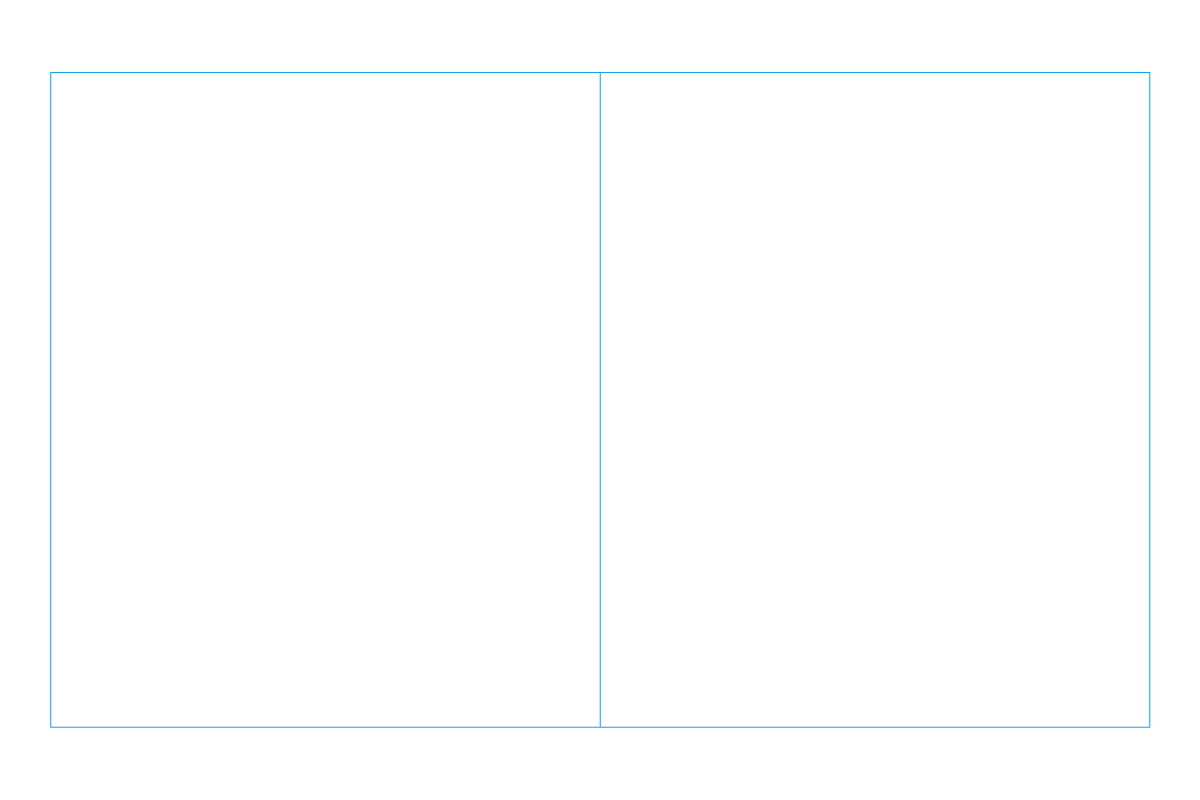
Challenge
In initial conversations, the client demonstrated the desire to make the report more accessible to readers, so as to differentiate itself from similar publications. The report contains a lot of data presented graphically, such as maps and tables quantifying the transformations of the affected area, as well as accounts from members of the villages from the Grand Turn in the Xingu. The challenge was to make the content provided by the client as comprehensible, easy and dynamic for the broad public they sought to reach, without losing any technical characteristics.
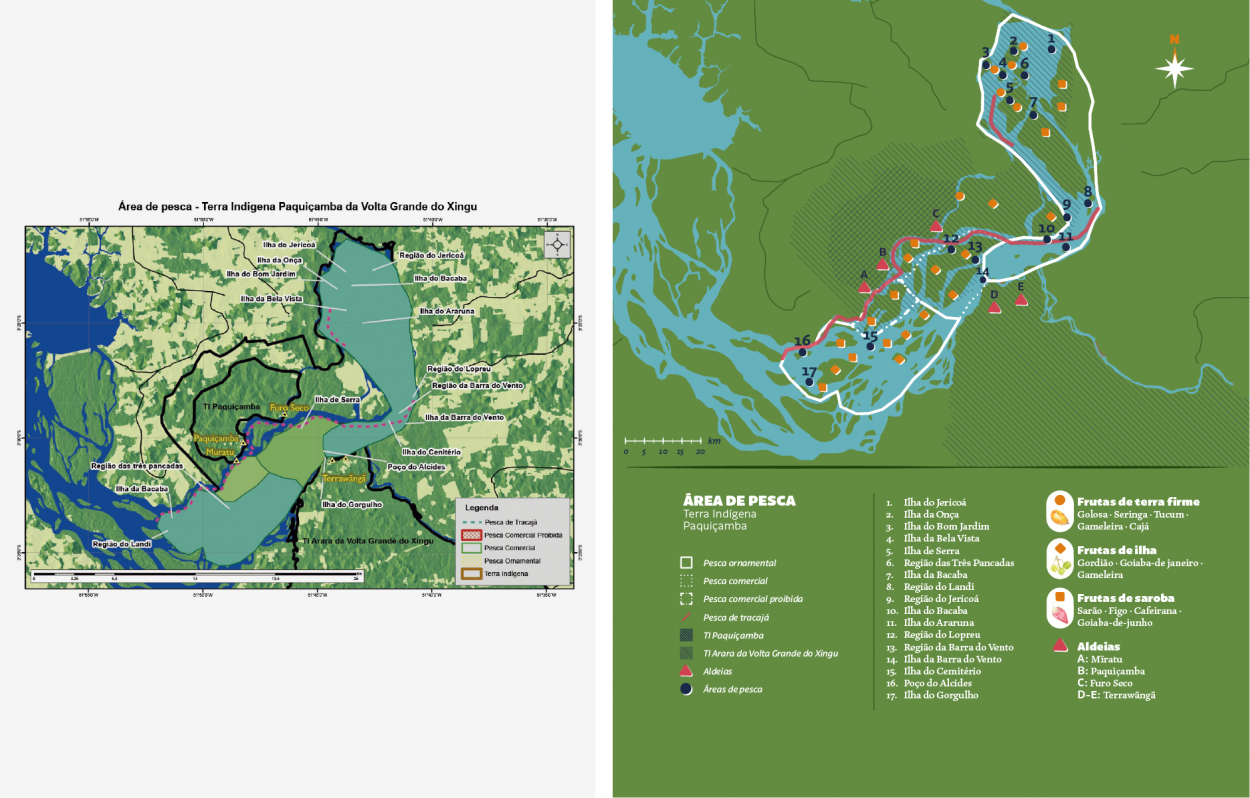
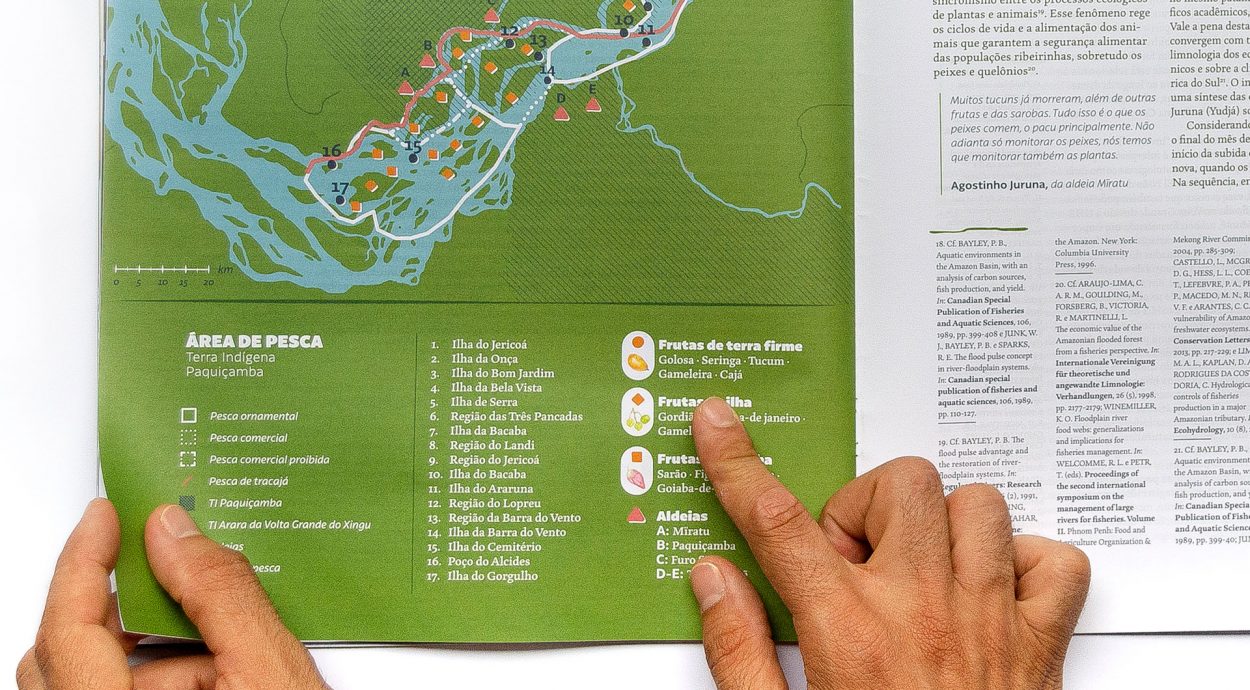
The challenge was to make the client’s material more comprehensible, engaging and easier to read.
Result
The proposed solution for the project was to emulate a magazine, in both format and internal sequencing. Thanks to this layout, the content became more palatable, which made the reading more dynamic and organized. The chosen format, illustrations, infographics and graphics were designed in a didactic and simple format, making the publication more attractive and engaging. The illustrations used were extracted and adapted from the animation of the Audiovisual Project (by Adams Carvalho and Beatriz Moraes Aguiar) which accompanied the release of the report. Link here. All the maps were redesigned and the main infographic of the publication was created with transparent pages in order to reduce the complexity of the information. The release of the physical publication happened in November of 2018 at an event in Belém and counted on participation from diverse peoples. To read the digital version of the magazine, you can access it here.
